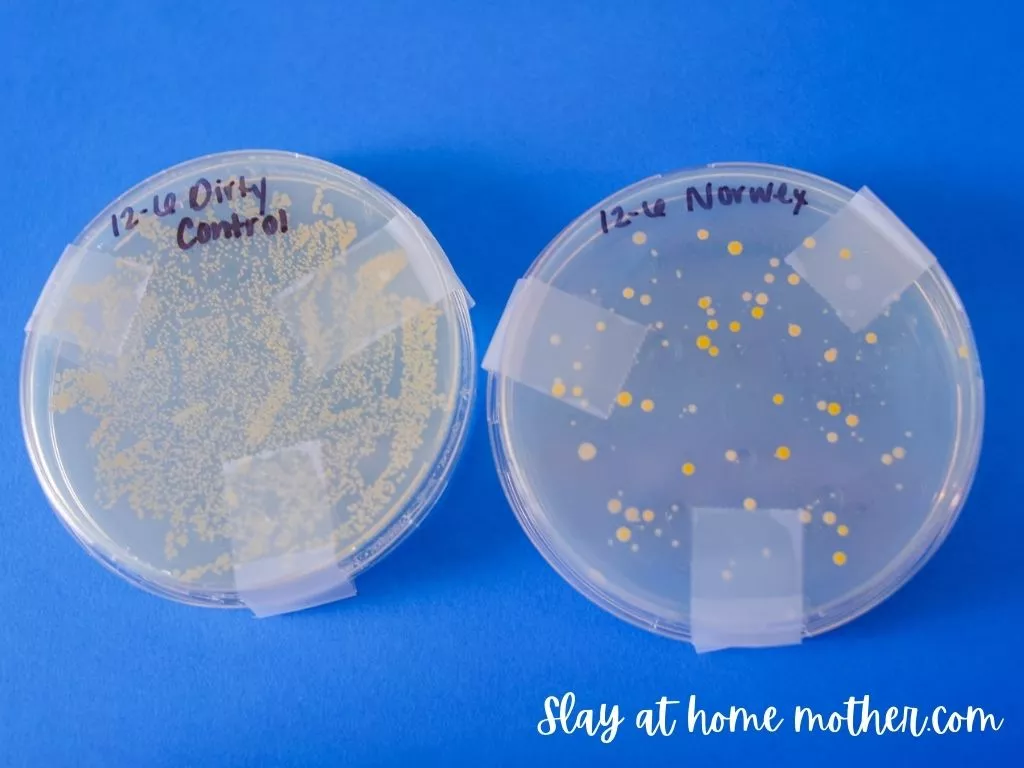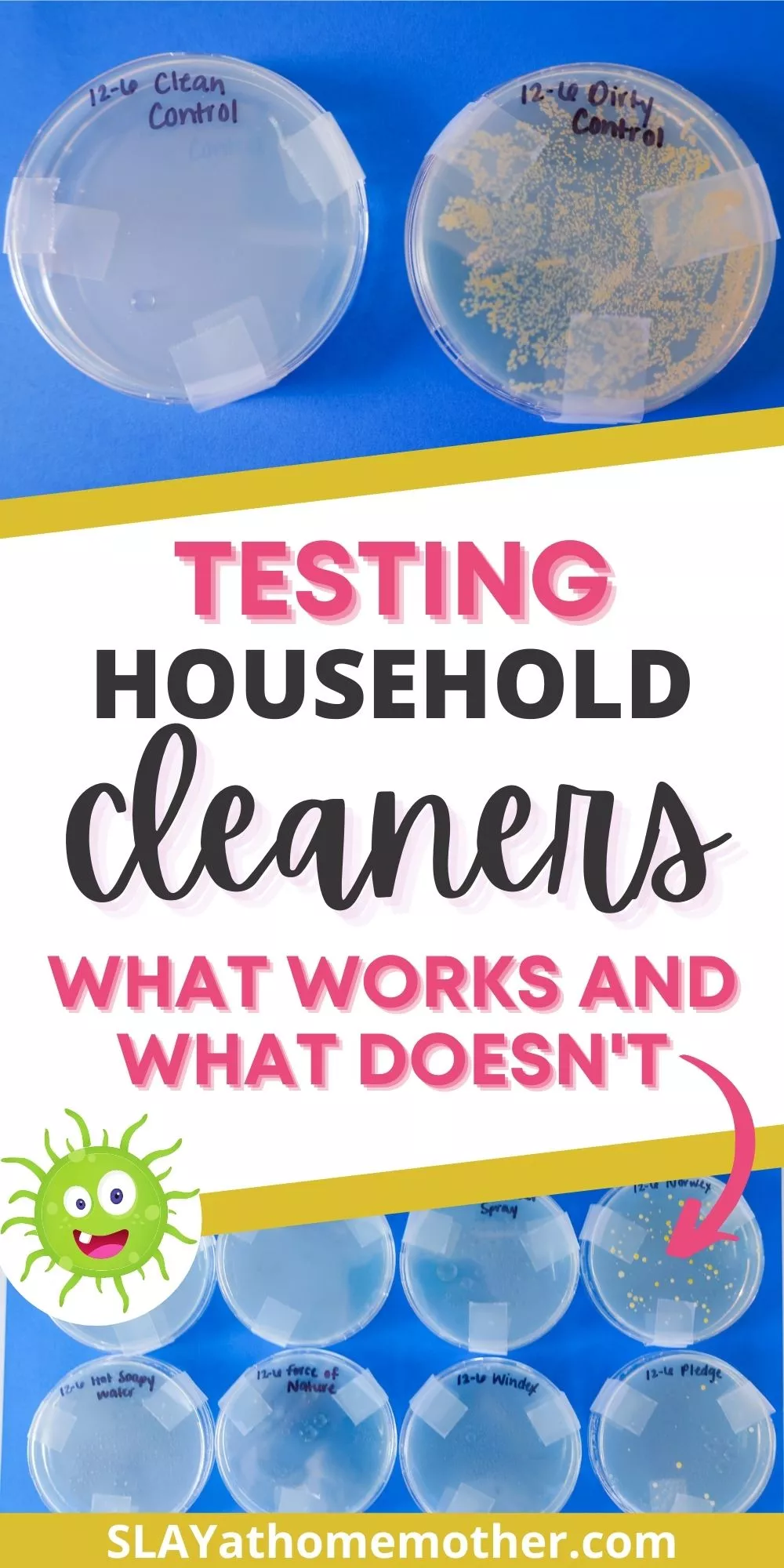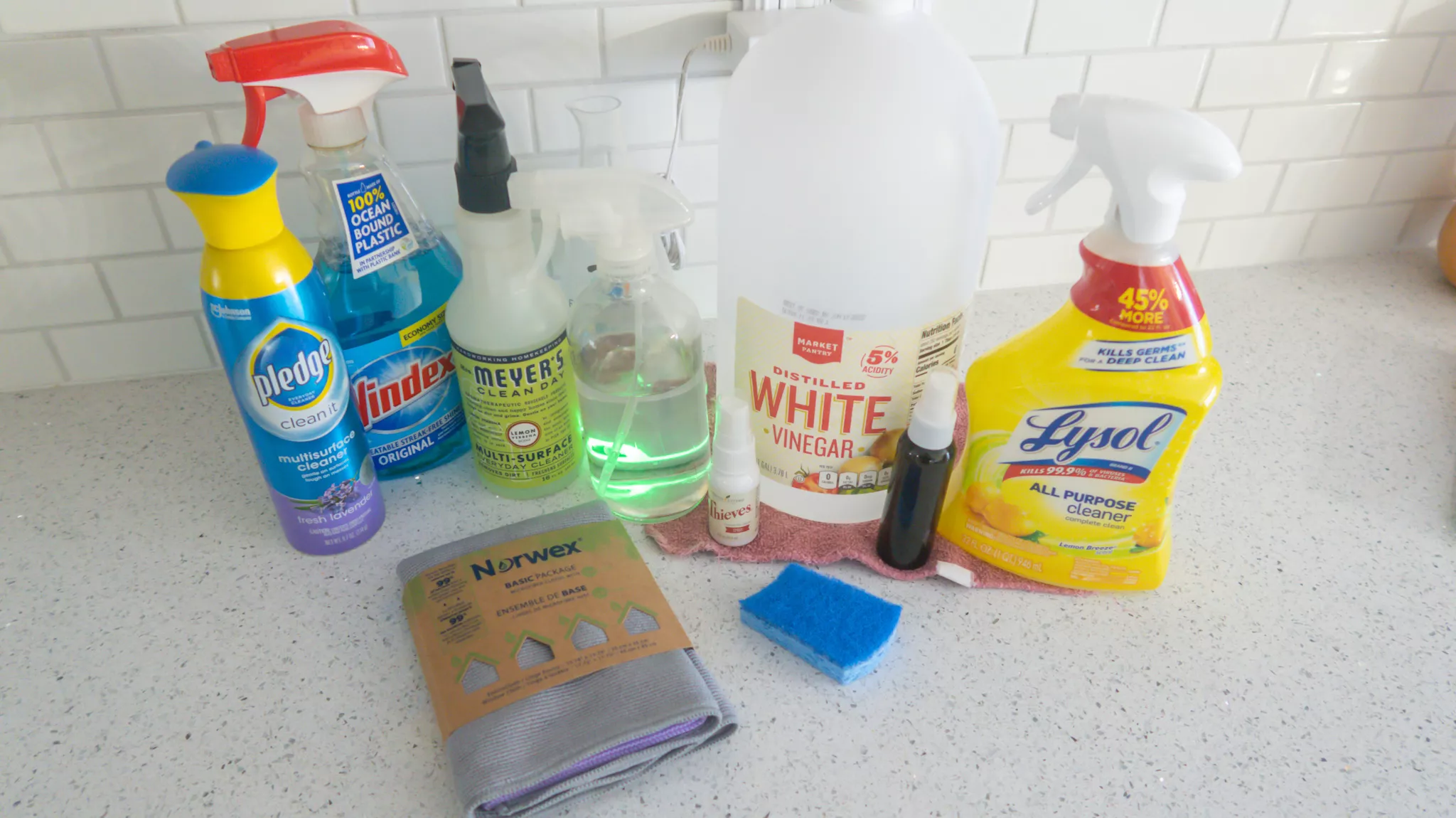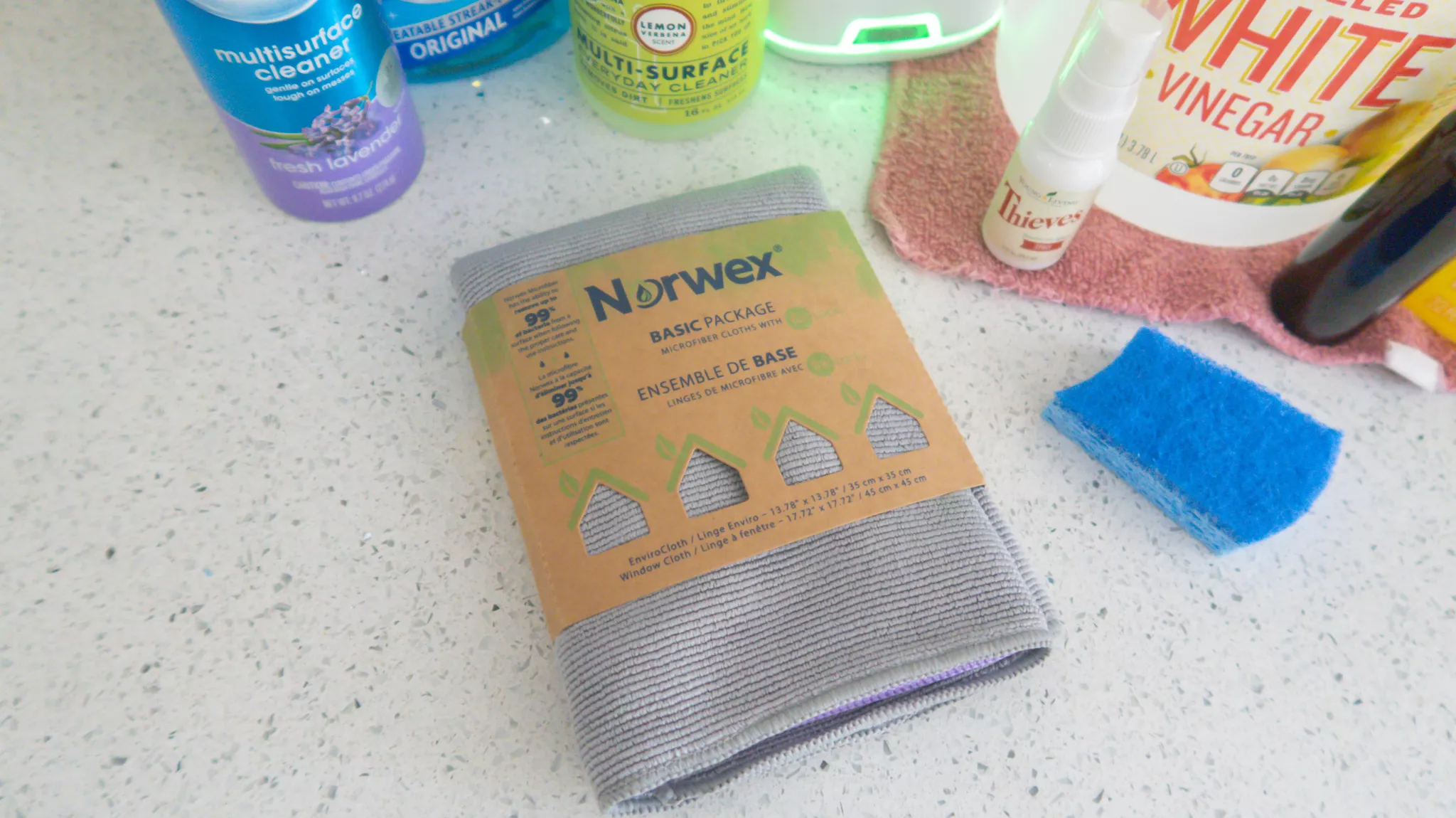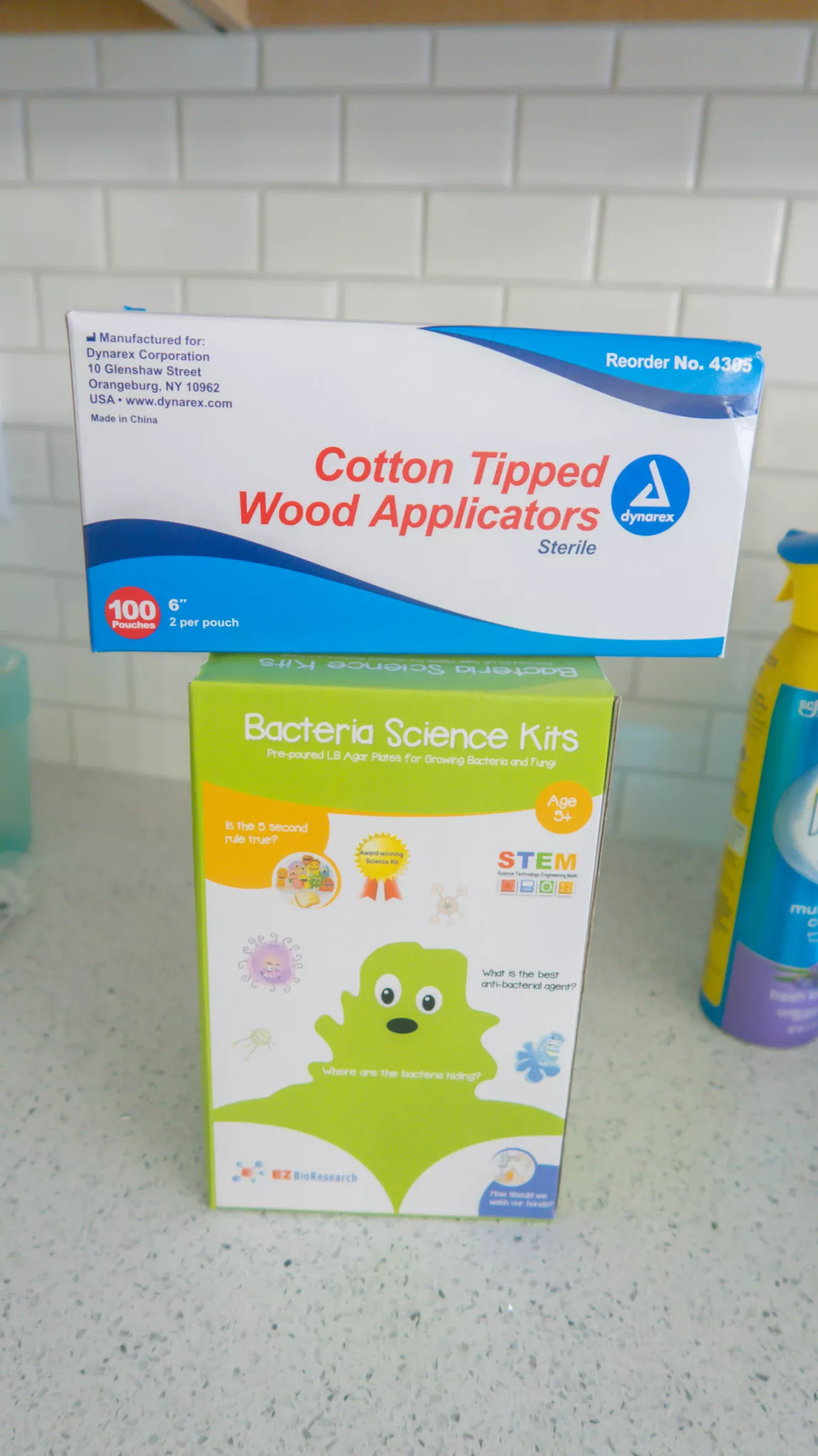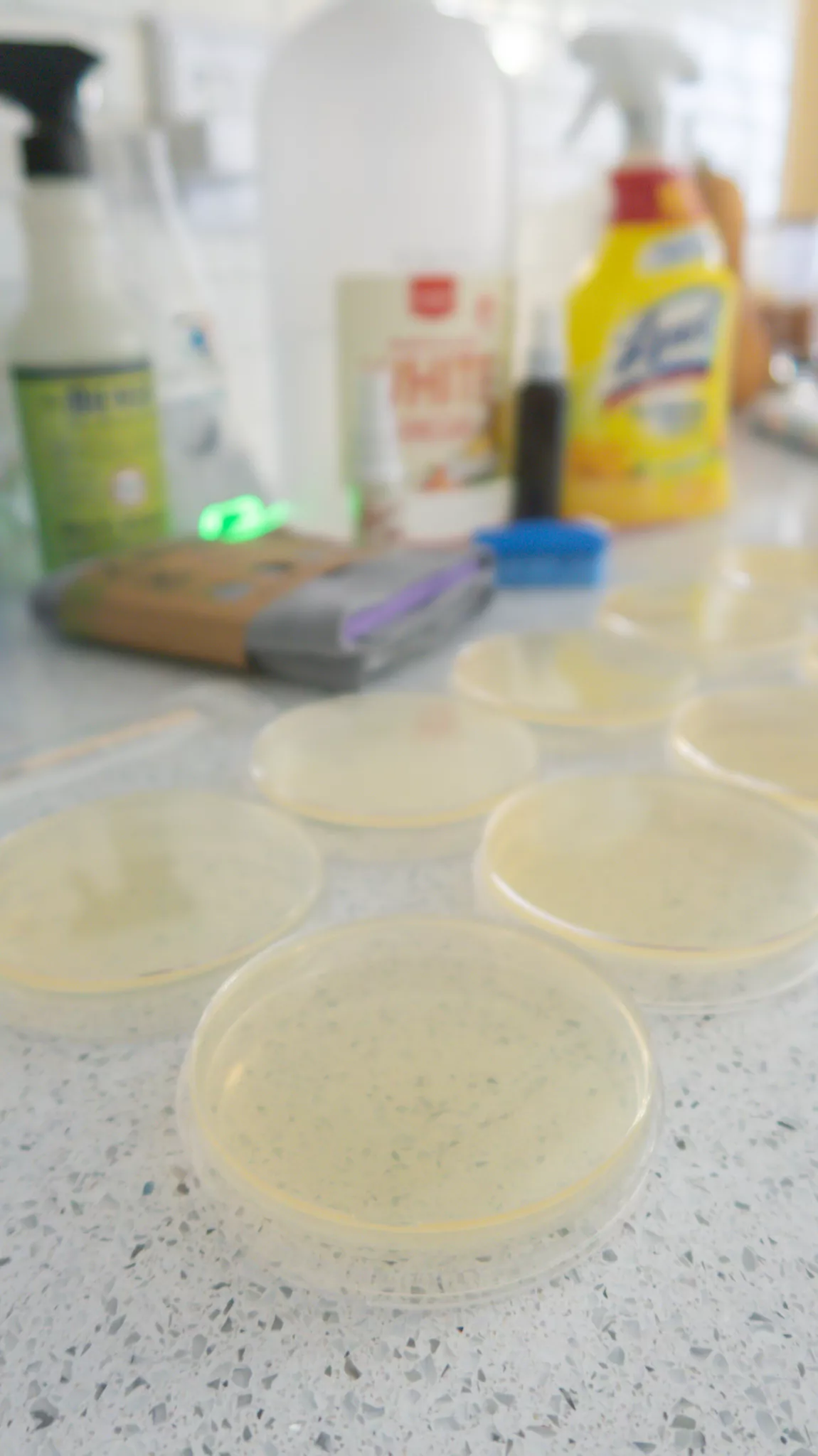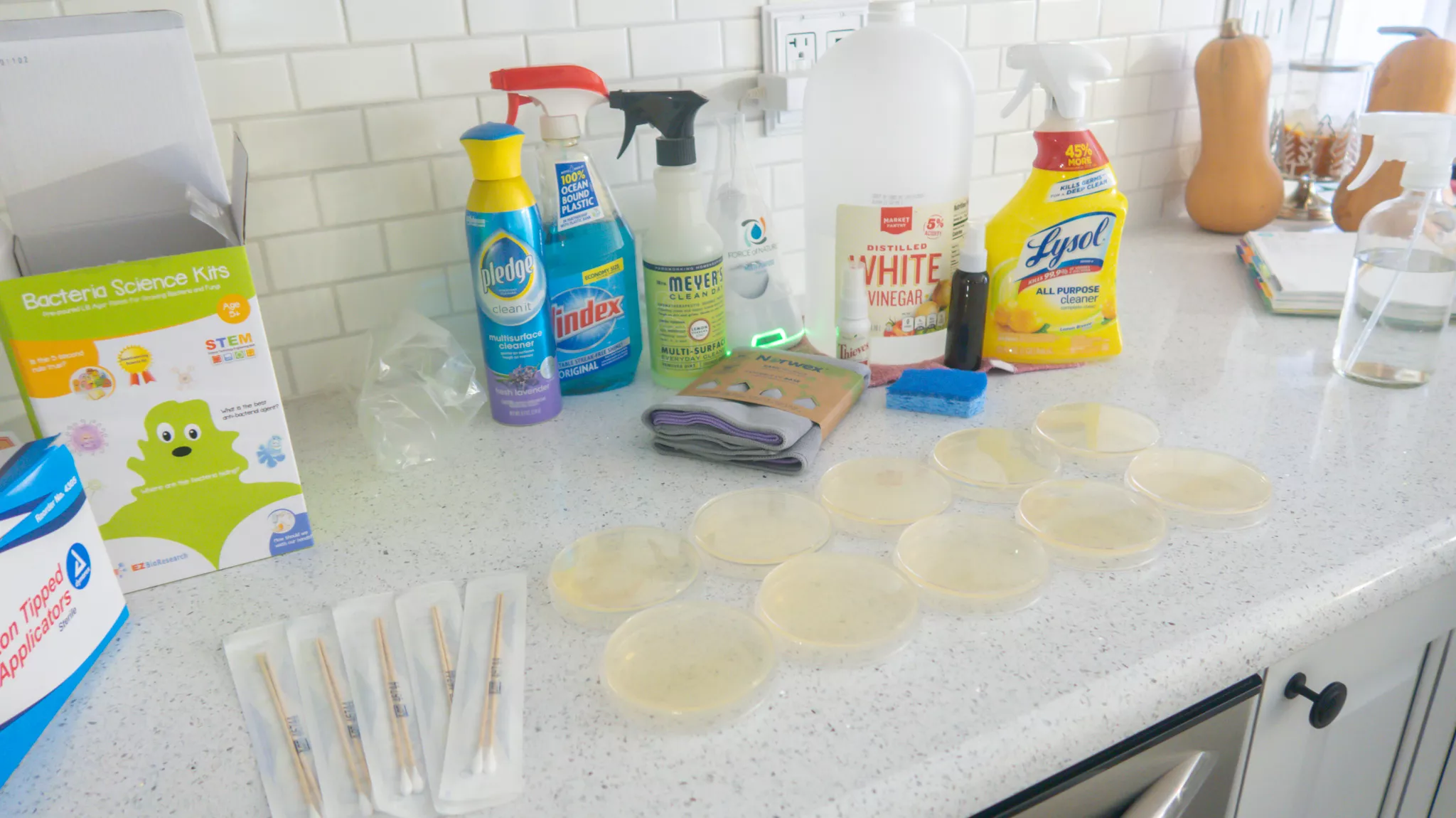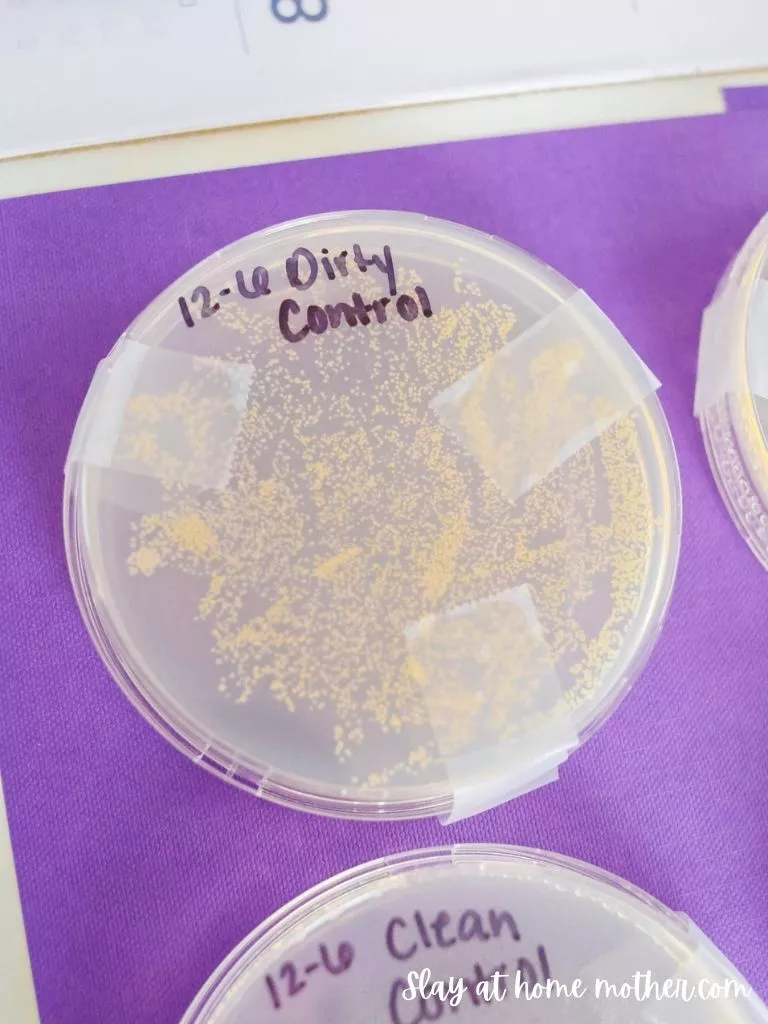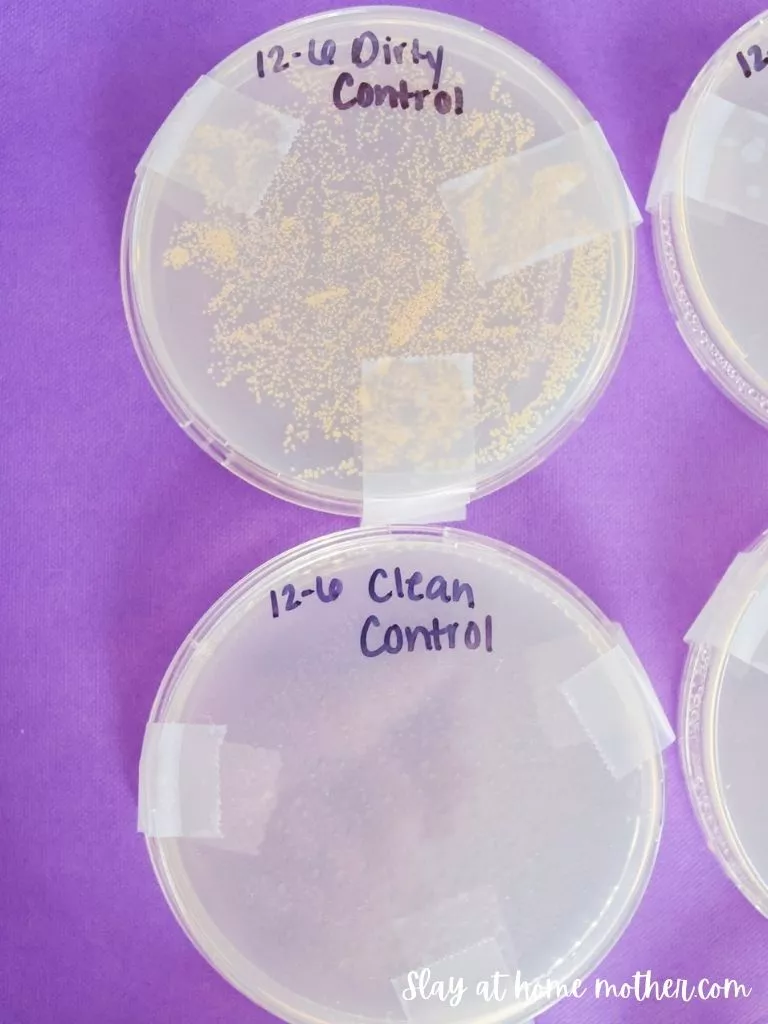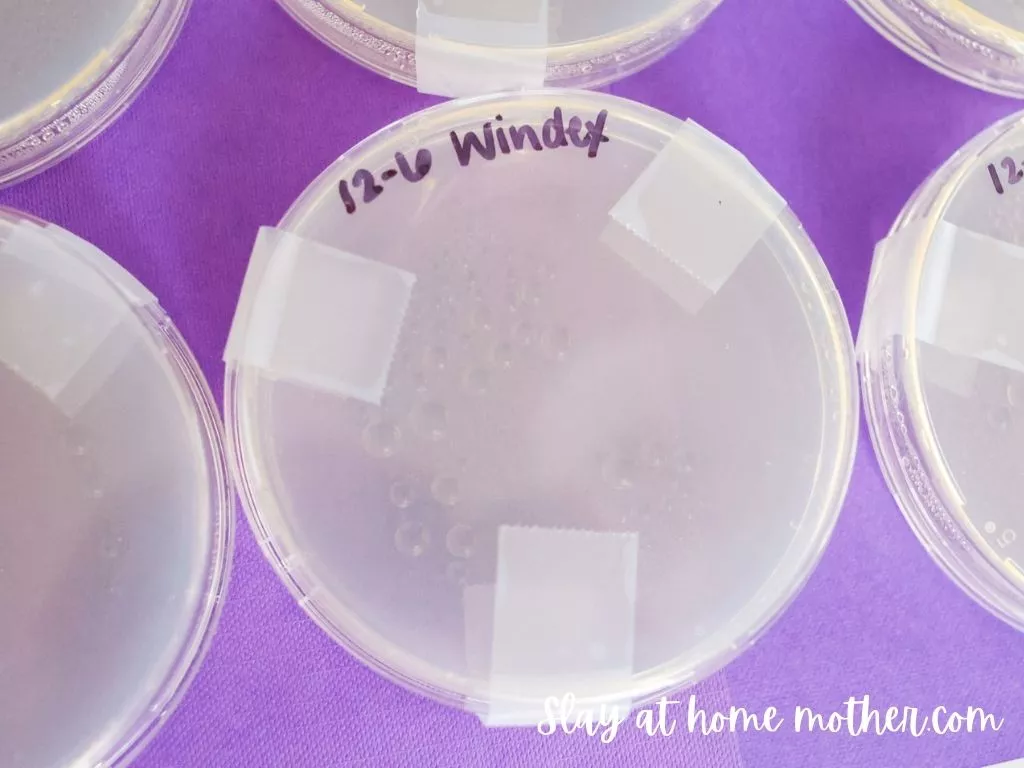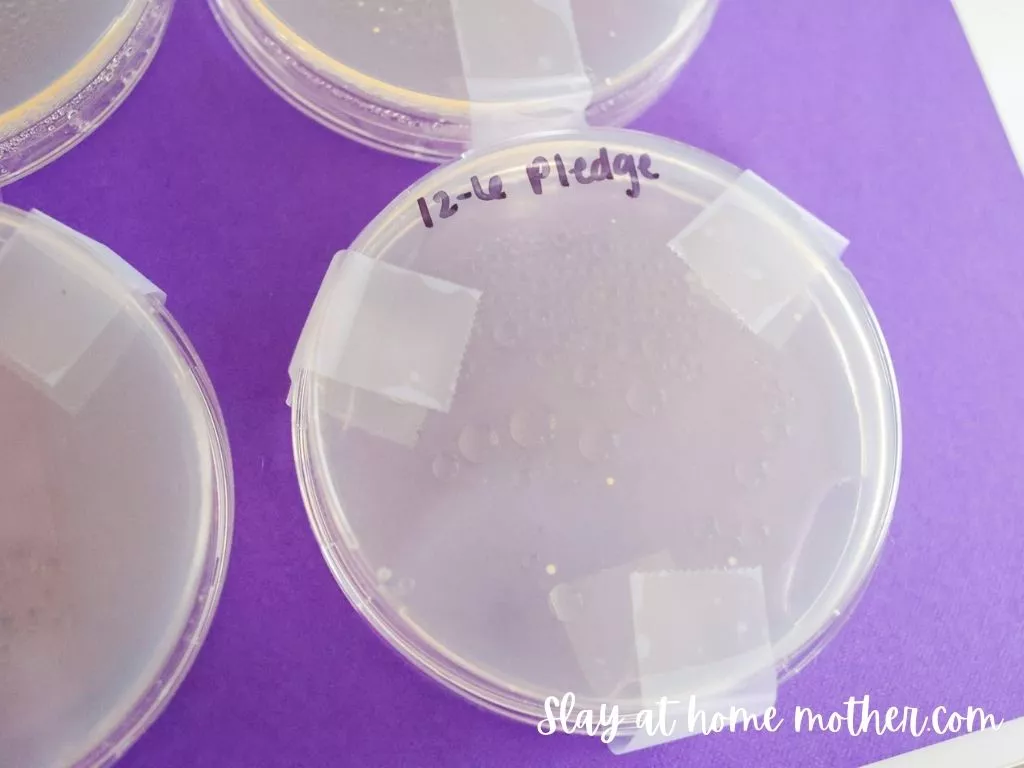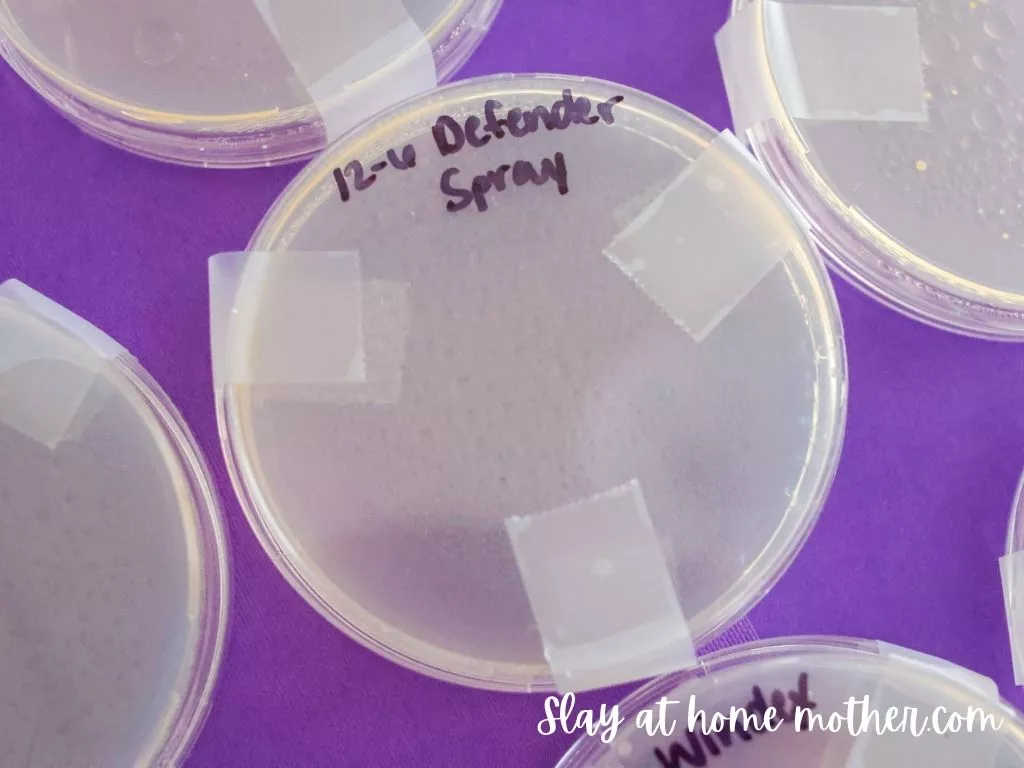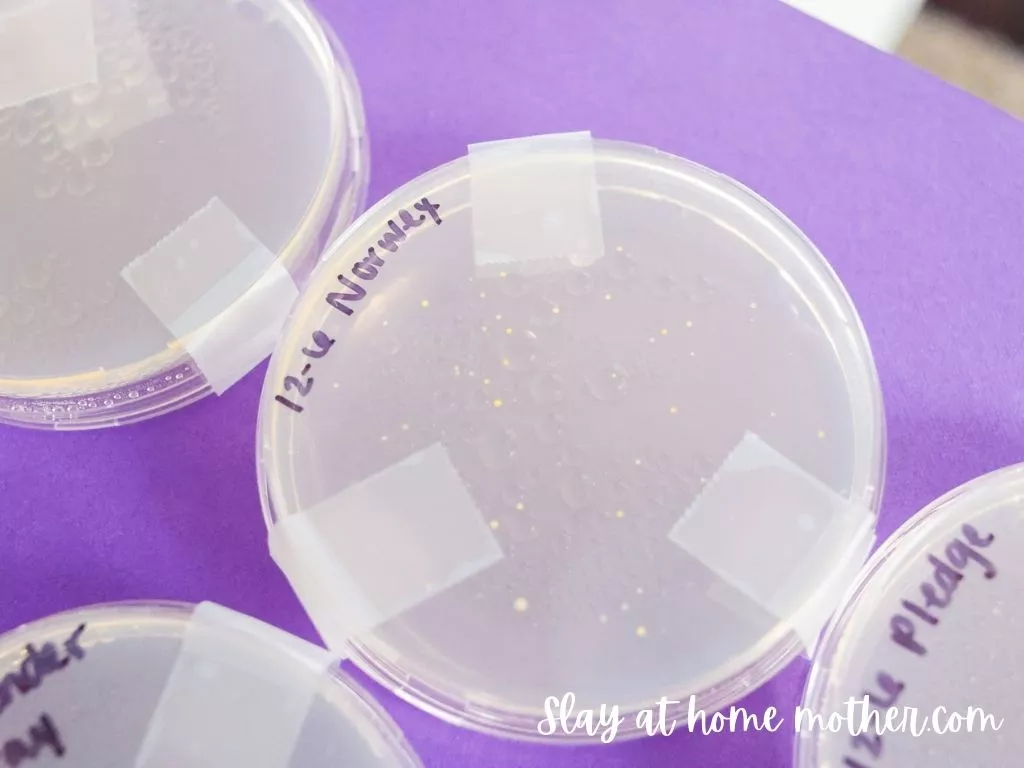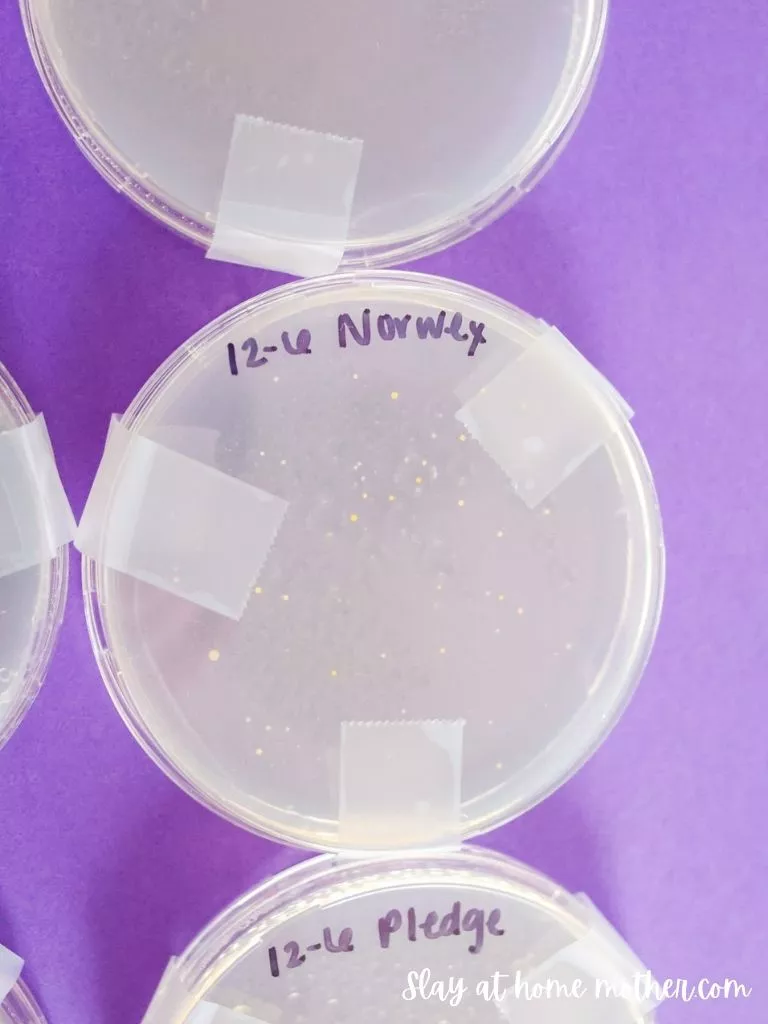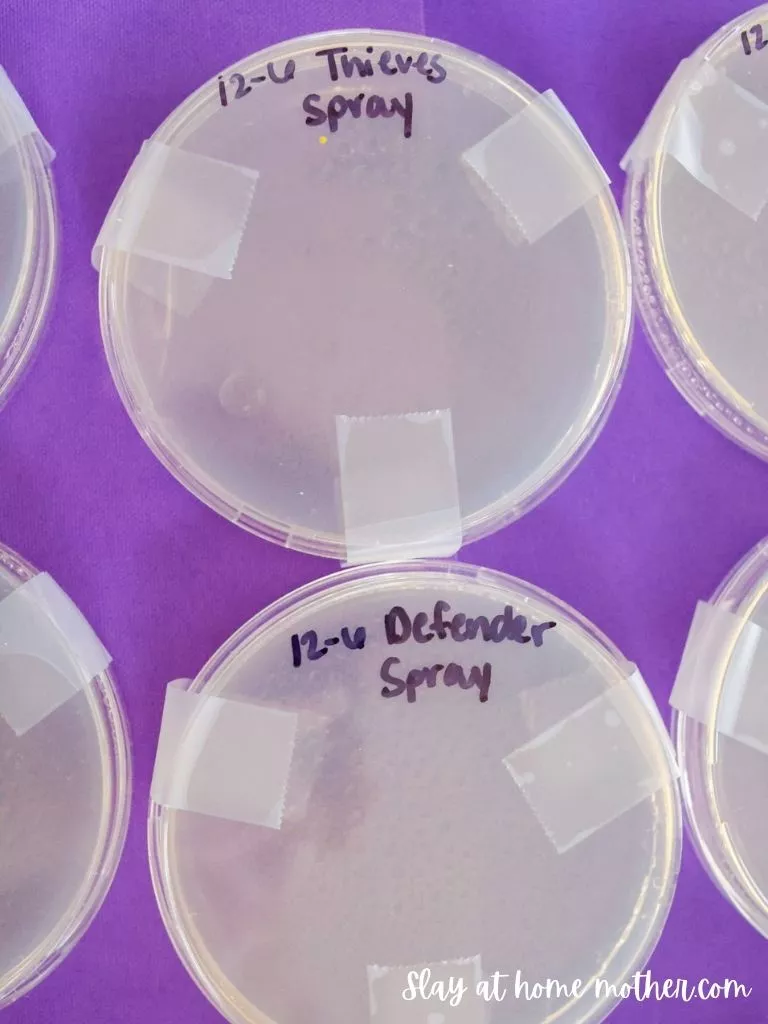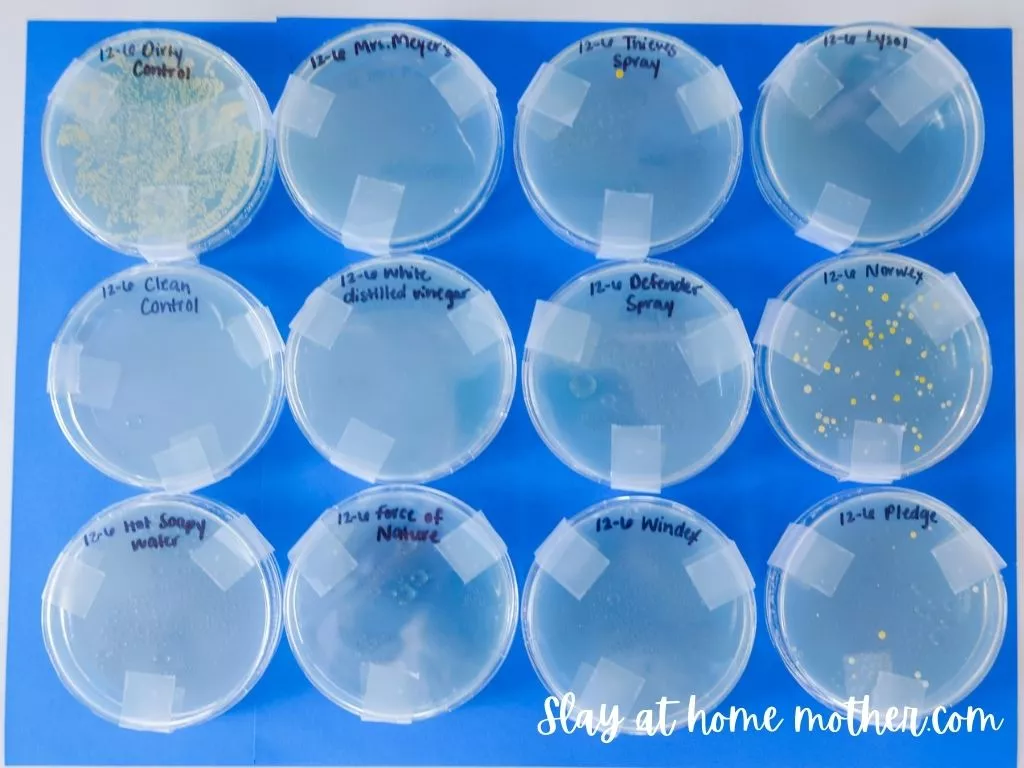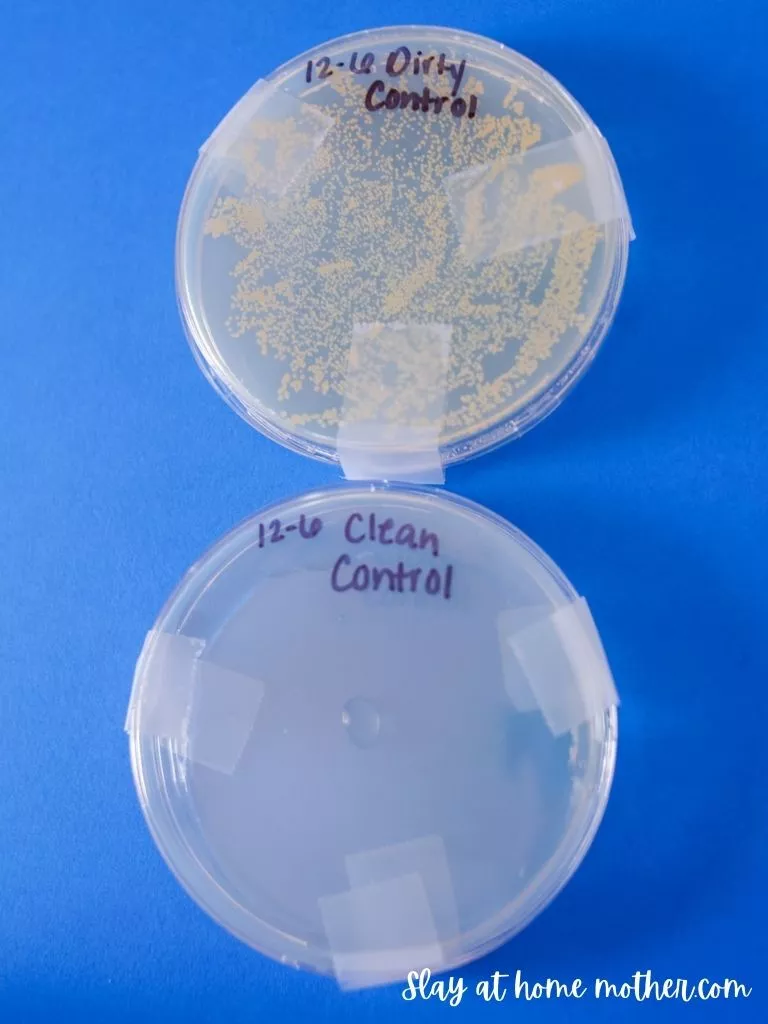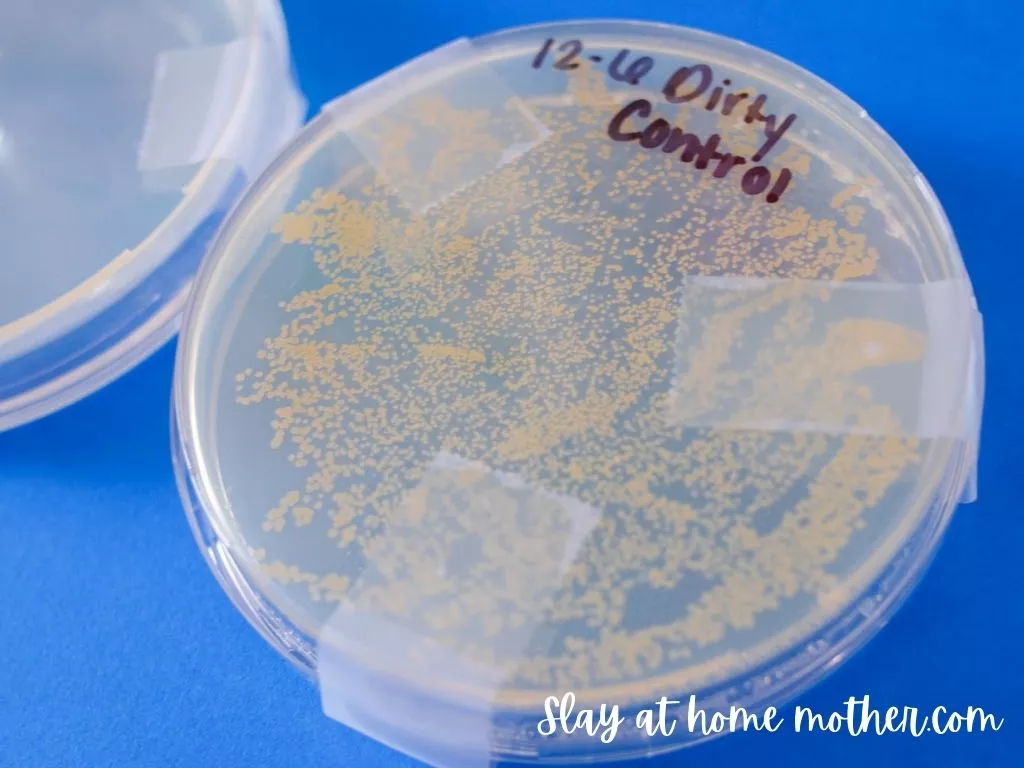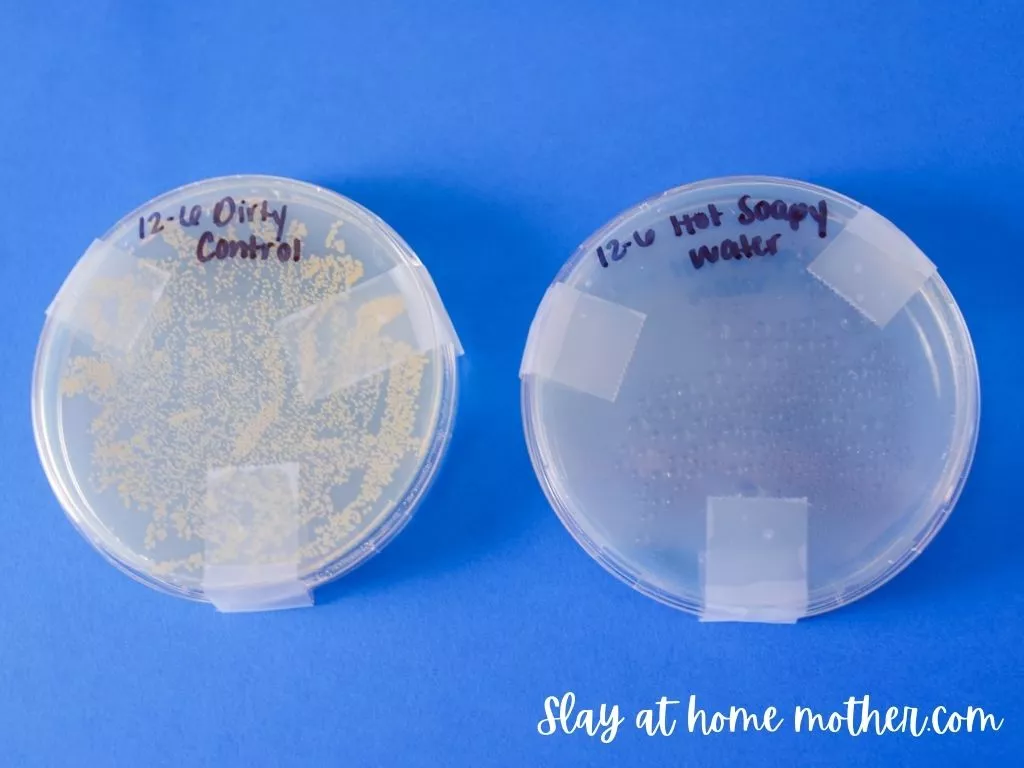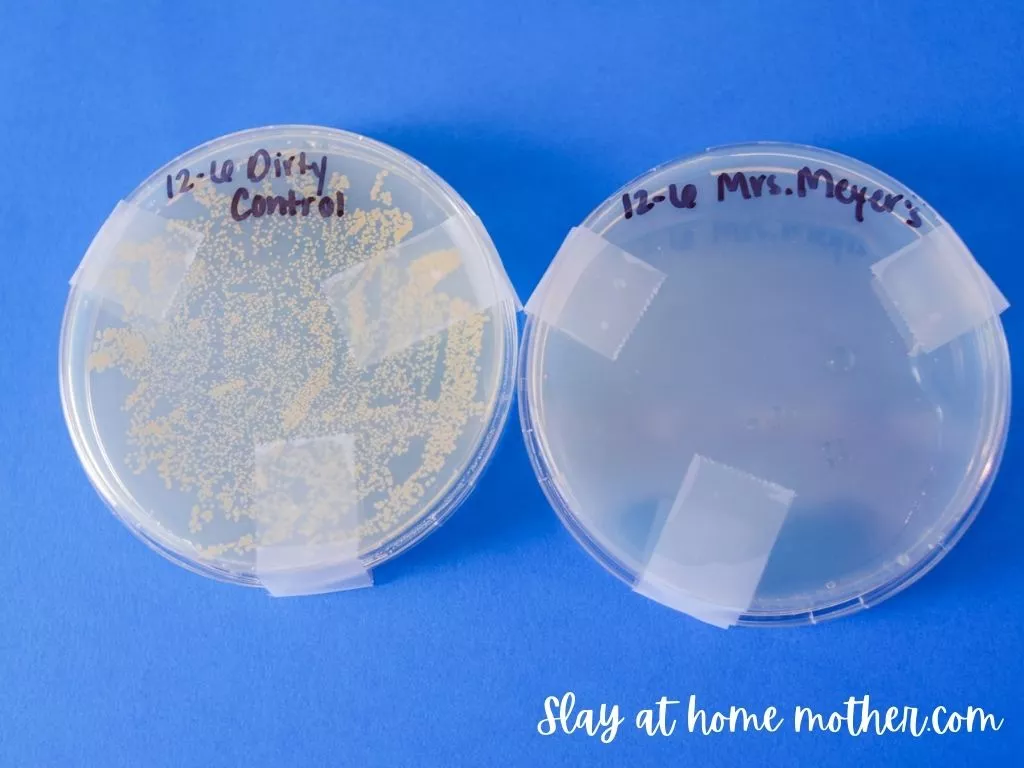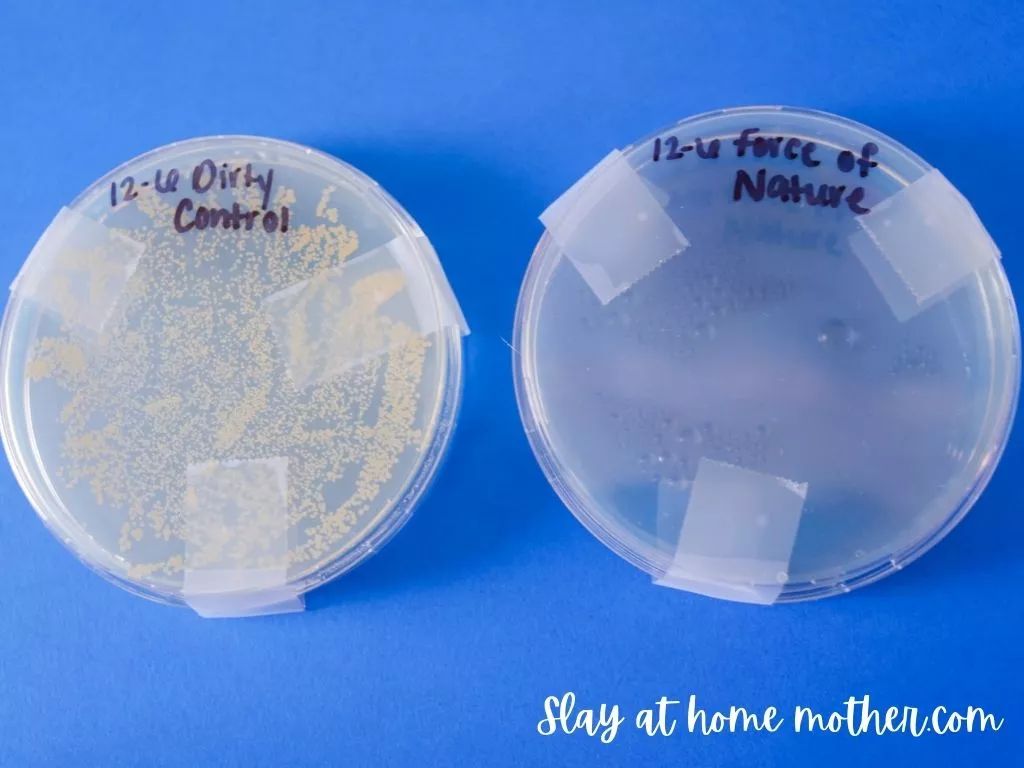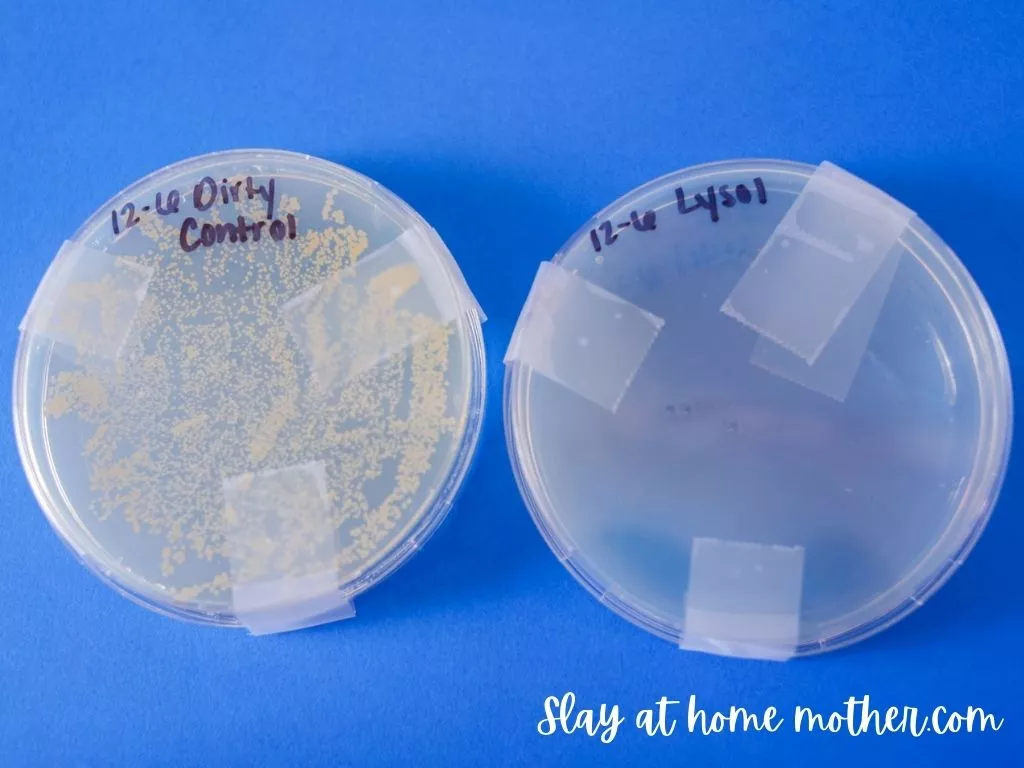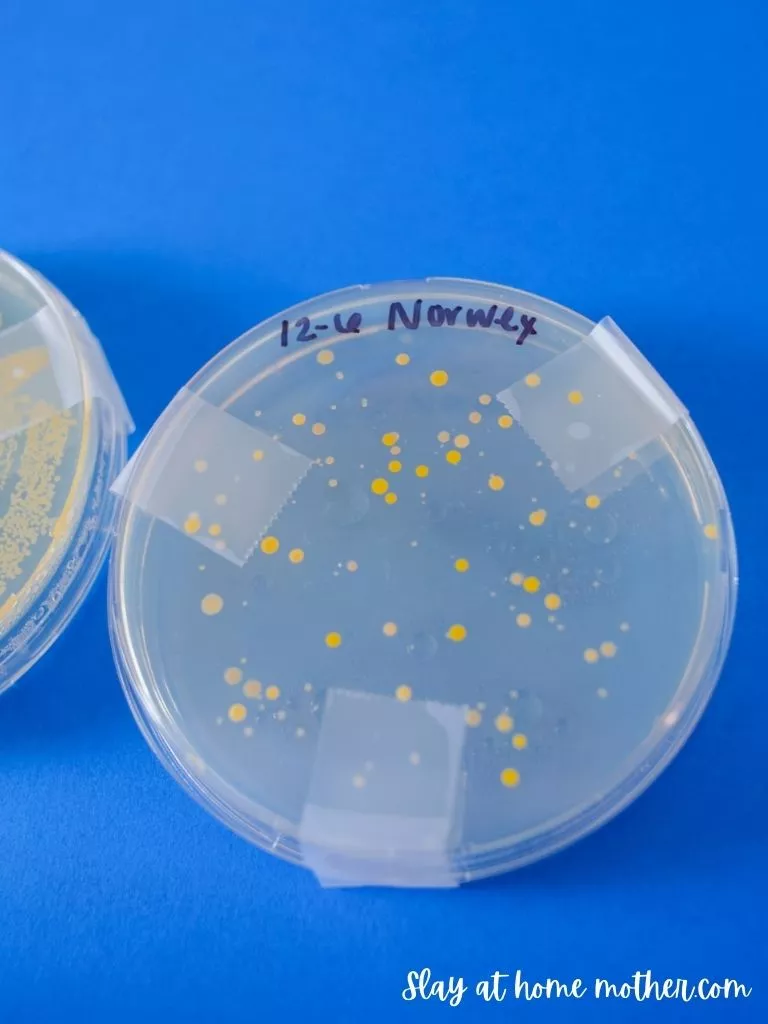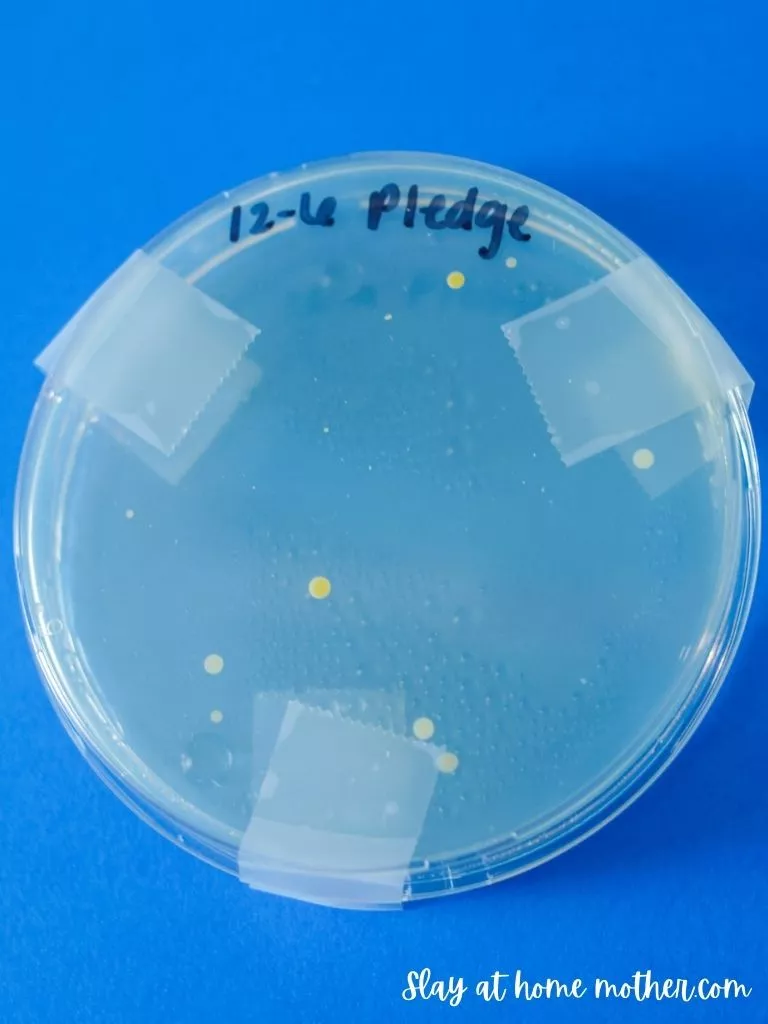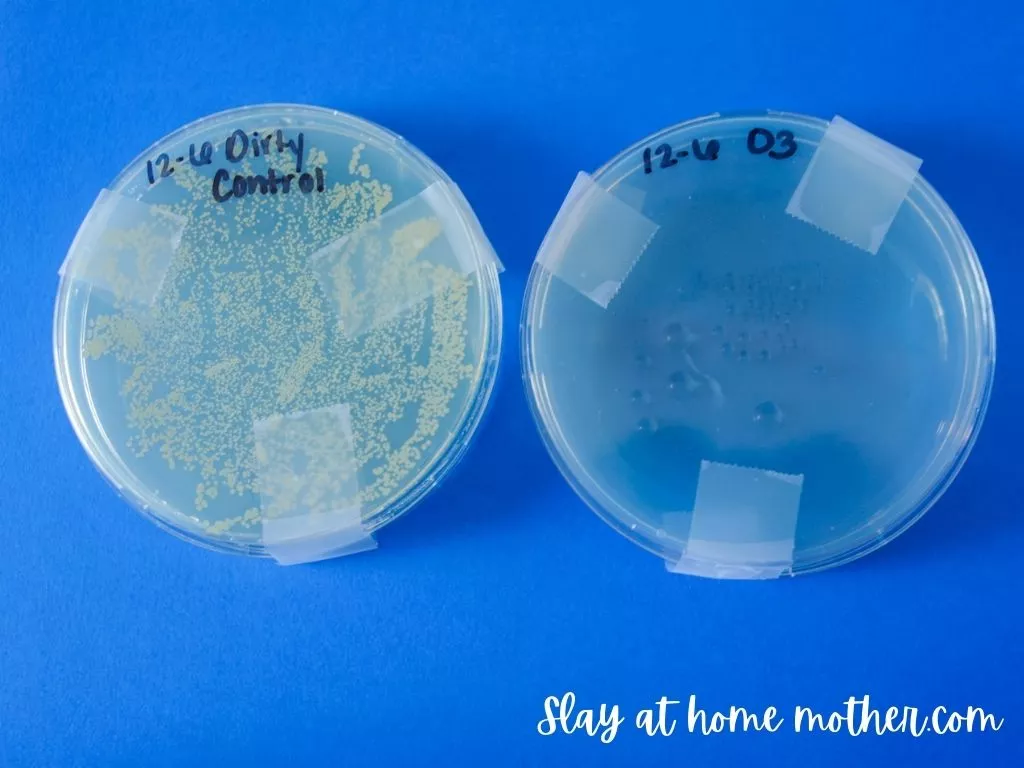How well do your household cleaners actually clean? I’m testing the efficacy of 10 common household cleaners with Petri dishes…
Hey there, friends and clean freaks!
I’m excited about this post because I’ve been working on it for quite a while.
I have been swabbing and testing cleaners over the last several weeks.
It’s my latest obsession!
I feel, as consumers, we buy cleaners based on the percentages we read on the front of the bottle (“KILLS 99.9% OF EVERYTHING”) and by scent.
The big cleaning companies have us trained to think that if something smells clean, then it must be clean.
But has anyone ever really put these cleaners to the test?
Besides the people being paid to test them.
How well do they perform in actual real-life scenarios?
*This post contains affiliate links, however, all opinions are my own, as always.*
Last week (or maybe it was the week before last?) I asked my Instagram followers what household cleaners they would want to see me test in Petri dishes.
Here’s what was requested:
- Pledge multi-surface
- Windex
- Mrs. Meyers
- Force Of Nature (probably because I feature it all the time)
- white distilled vinegar
- thieves spray (you can only get this through a Young living rep
- defender spray (thieves equivalent by Simply Earth – recipe here)
- Lysol
- Norwex enviro cloth
- hot soapy water (I used Dawn original blue dish soap)
- O3* (aqueous ozone)
*I threw in this ozone cleaner I’ve been testing out separately because, well, I had the plates and swabs out to test everything else anyway, so why not?
P.S. Ignore the sponge – I ditched that and went with a clean new paper towel to test with the hot soapy water.
In fact, all cleaners were wiped away with clean paper towels, minus the Norwex cloth.
Here are the Petri dishes I used, as well as extra sterile swabs I purchased separately.
After checking my plates to ensure they weren’t contaminated, I unwrapped them and laid them flat on the counter.
My dishes require incubation upside down, so I decided to write the names of each cleaner on the bottom of the dish since that’s what would be facing up.
My chosen contaminant
I’ll be honest, I ran this experiment once before publishing these results but I had to ditch the plates as nothing grew in them.
To contaminate the surfaces in the first (failed) experiment, I had my children touch and cough on the counter.
Unfortunately, either my kids aren’t germy enough or something was off with the plates.
So, this experiment was repeated using raw chicken as the contaminant.
I chose to use my bathroom counter since we have quartz in the kitchen, which cannot be cleaned with acidic cleaners like vinegar, and I wanted the surface to be the same for each agar plate.
In between using cleaners, I washed the counter with fresh soapy water and re-contaminated the surface with raw chicken.
Dirty Control and Clean Control
It was important to have both a dirty control and a clean control.
The dirty control, swabbed with the contaminated surface, shows:
- the surface is indeed contaminated and bacteria is growing in the plate
- the difference between the contaminated surface vs. the other plates with samples taken from the same contaminated surface that were cleaned with different cleaners.
If you repeat this experiment at home, I suggest you dedicate a plate to these controls.
The side by side comparison is pretty cool to see, too!
How I incubated my dishes
It’s true, I don’t have an official incubator (they are hundreds of dollars), so I improvised.
I used a reptile basking light hooked onto my camera tripod set above my dishes.
We have a bearded dragon, so this was something we had on hand.
I’ve also read that you can use a regular desk lamp hovered over your agar plates.
If you see the plates developing condensation inside, that’s okay! They’re incubating correctly.
The condensation will collect in the lid when the dishes are turned upside down to incubate, which is ideal for growing bacteria.
If you repeat this experiment at home…
Before you try this at home, please be sure to practice proper handwashing and hygiene.
This includes washing hands before and after touching contaminated Petri dishes, surfaces, and the contaminant itself.
Handle the contaminant with care, as well.
For example, I placed a piece of raw chicken on a plate, covered my hand with a plastic Ziploc bag to lift it from the plate, and rub it on the counter.
Please also be sure to keep all dishes away from tiny hands and mouths.
Incubate in a spot that your children and pets cannot reach.
After Two Days Of incubation
I recorded the results of my experiment after two days of incubating the Petri dishes, and again at 4 days to monitor bacterial colony growth and development.
Here is the dirty control…
Tons of bacteria were present from the raw chicken.
The clean control also shows that my agar plates were not contaminated, which is great!
Of all the household cleaners I had requested for this test, Windex was probably the most highly requested!
I was incredibly surprised by this – I didn’t realize so many people used it to wipe down their kitchens and bathrooms.
It makes sense, though, because Windex has ammonia in it.
In my experiment, Windex performed very well – no colonies present.
The plate swabbed after using Pledge multi-surface spray started showing some colonies after two days…
Defender spray is the Simply Earth equivalent to Thieves spray (here’s the recipe if you want to make your own).
After two days of incubating, there were no colonies present.
Norwex – phew, this was another highly requested ‘cleaner’.
I guess it wouldn’t be a cleaner so much as a cleaning product.
I was very interested in seeing how well this cloth performed, and plan on writing a post dedicated to its performance.
After two days of incubating, I saw tons of colonies present in the dish – yikes!
Thieves spray was another requested cleaner. I did not have the household cleaner, but I did have the spray, so I included it in my experiment.
After two days, only one colony was present…
After Four Days of Incubating
Here are my results after four days of incubating…
The dirty control colonies were still strong and kicking, while the clean control continued to reassure me that the plates were not contaminated. 🙂
Hot soapy water (used with a paper towel to avoid any sponge contamination) seems to have performed well at cleaning up the raw chicken.
Mrs. Meyer’s also did a great job cleaning up raw chicken from the countertop…
One of my favorite cleaners, Force of Nature, shows no colonies after 4 days of incubation.
It has a 10-minute working time, which is what I allowed for this cleaner but is completely non-toxic.
You can read my full non-sponsored review on this DIY non-toxic cleaner here.
Lysol, no surprise, performed well with a 2-minute working time…
Here are the Norwex results after 4 days of incubation…
Yikes.
I’ll be testing this one a little more though since it gets a lot of hype.
Pledge multi-surface spray after four days shows a few more colonies…
And here’s the ozonated water (aqueous ozone) cleaner that I’ve been testing and using lately against the raw chicken…
Zero colonies present! So impressive.
Here’s the in-depth non-sponsored review of this ozone spray cleaner.
And here is the Ozone cleaner spray bottle on Amazon.
I hope you found this post useful and educational.
This experiment was really fun to do! I always love learning more about the cleaning products we’re using in our home.
I’ll be doing more testing on cleaners in our home in the future so feel free to drop a comment below if there’s a particular cleaner you’d like to see tested and I’ll try my best to include it!
Be sure to follow me on Instagram for more Petri dish testing, cleaning hacks, and recommendations.

